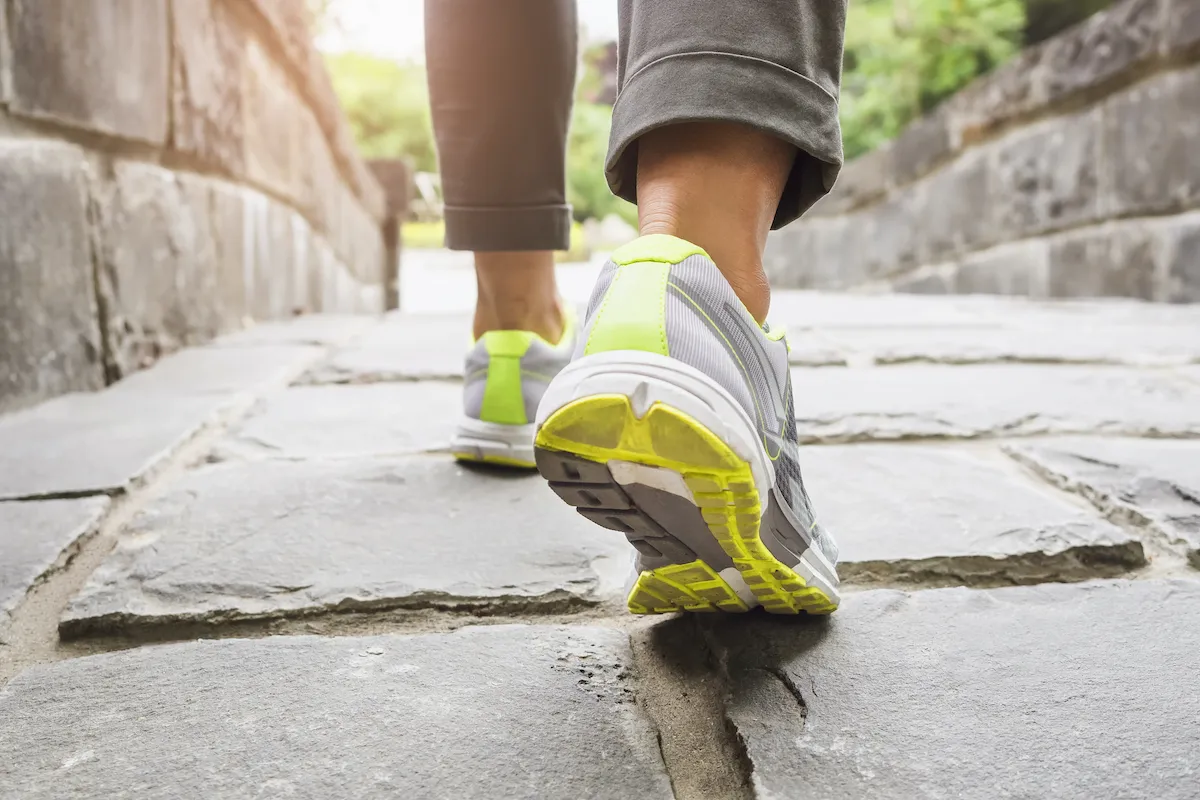The Best 30-Second Trick for Weight Loss, According to Dietitians

Of course, weight loss doesn't happen overnight; however, there are some weight loss tips that don't take too long to do—and that can have significant long-term results. And when we say "not too long" we really mean "not too long." In fact, there's one incredibly effective weight loss tip dietitians recommend that takes half a minute to do: take 30 seconds to breathe and be mindful.
Really, that's it! It doesn't involve kicking any food out of your pantry or sweating it out in the gym (although those things also help). The practice of being mindful takes just 30 seconds, but dietitians say it can help you lose weight—and keep it off—if you do it consistently.
Check in with yourself right now. Are you feeling hungry?
"Every few hours throughout the day, take 30 seconds to check in with your hunger and fullness. I like to tell my clients to think about hunger and fullness on a scale of 1 to 10 with 1 being starving and 10 being extremely stuffed. Aim to stay in the middle of this scale. This helps you avoid both excess calorie intake and long stretches without food," says Mackenzie Burgess, RDN, a registered dietitian nutritionist and recipe developer at Cheerful Choices.
"For example, if you find yourself feeling uncomfortably full every time you eat, this may be a sign you are eating past your energy needs. On the other hand, ignoring hunger for too long can lead to feeling ravenous later on and may cause you to overeat, leading to weight gain long-term. Instead, taking those few seconds every day to check in with your body can help you remain fueled and prevent unwanted extra pounds," says Burgess.
To be even more effective with your 30 seconds of mindfulness, Mary Wirtz, MS, RDN, CSSD, a registered dietitian nutritionist and Nutritional Consultant at parenting website Mom Loves Best, suggests using a technique she calls "halting," in which you pause prior to eating.
"I encourage clients to halt for 15 to 30 seconds prior to a snack or meal. It's a seemingly small change that can have big wellness impacts," says Wirtz. "Halting helps to be present in the moment and assess if you are truly physically hungry or if you are instead tired and need a quick nap or a quick burst of physical activity."
The reason this works is that Wirtz says that we often eat out of mindlessness: when we are overly fatigued, tired, stressed, lonely, among many other emotions versus when we are truly physically hungry. So rather than eating because we're hungry or making smart decisions about what foods to eat, "[eating out of mindlessness] often precipitates overeating less healthy foods, like high-calorie treats and snacks."
You can make those 30 seconds even more effective for weight loss by taking some deep breaths, suggests registered dietitian nutritionist Jeanette Kimszal, RDN, NLC, of Root Nutrition.
"Breathing exercises have been shown to reduce hunger in a few studies," says Kimszal.
Taking time to breathe with intention can promote weight loss not only because it helps reduce hunger, but also because it can support a calmer mind, which is also linked to weight: "Breathing can reduce anxiety, stress, and depression. These conditions can increase cortisol levels which may lead to weight gain. Lowering cortisol production could also help to decrease food cravings," says Kimszal.
There are a few different techniques dietitians suggest you use during your 30 seconds of mindfulness that can all help you on your path to weight loss.
Read on to learn more, and for more on healthy eating, don't miss Simple Ways to Start Losing Weight Immediately, According to Science.
Take a few deep breaths

As Kimszal explained, taking deep breaths can help you reduce hunger, and registered dietitian Jean LaMantia, RD provides guidance for putting this tip into action:
"If you find yourself very hungry before your meal, take 3 deep breaths before you eat — really expand your diagram. Remind yourself to eat slowly and focus on stopping eating when the hunger is gone," LaMantia says.
Use a hunger scale

Diana Gariglio-Clelland, RD, a registered dietitian at Next Luxury expands on Burgess' tip about using a hunger scale:
"Use a hunger scale. Mindful eating is a great tool for people of all ages to utilize to be better in tune with their natural hunger and fullness cues, regardless of weight loss goals. Create a scale from 1-10 with numbers 1 and 10 representing either extreme hunger or extreme fullness; a score of 5 would be neutral. When you go to eat, ask yourself where you're at on your hunger scale. If your number falls on the end of the scale of not feeling true hunger, ask yourself why you're wanting to eat — is it boredom, sadness, or procrastination? Finding out why we eat in terms of emotions and other habits is just as (if not more) important than what we eat," says Gariglio-Clelland.
Slow down the pace

"Eat slowly. We are so busy in our day-to-day lives, sometimes we don't take the time to actually sit down and enjoy a meal! Mindfully eating your meals, really tasting the food, and eating slowly not only make the experience more enjoyable, but you also allow yourself time to check in on your hunger and fullness levels. Typically you'll end up eating less because you realize that you are satisfied before your plate is clean," says Amy Davis, RD, LDN, of The Balanced Dietitian.
Chew your food well

"Be sure to take a few seconds to mindfully slow down while you're eating. Chew your food well and learn to recognize when you feel satisfied but not too full," says Anika Christ, RD, CPT, Registered Dietitian, and Certified Personal Trainer from Life Time.
Stand up

To really be more mindful, shake up what you've been doing. And it's easy to: just stand up!
"The average American has a daily commute to and from work totaling 1.5 hours and sits at a desk for another eight to 10 hours each day. Growing evidence suggests that inactivity can be a cause of obesity, insulin resistance, dyslipidemia, type 2 diabetes, hypertension, and other metabolic diseases. Because work tends to be the place where we spend the longest amount of time sitting, I like to start there with my clients by scheduling regular breaks to stand up from their desk," says Christ.
Sip a glass of water

If you're erring on the end of hungry during your 30-second hunger assessment, your next step before eating could be to take a sip of water. "Sometimes, people can mistake hunger for thirst and end up eating food when their body really doesn't need it. When you start reaching for a gigantic ice cream cone or sugary snack, sip on a glass of water beforehand — it may save you some calories in the long run by quenching your thirst," recommends Lauren Manaker, MS, RDN, LDN, CLEC, CPT, a Registered Dietitian Nutritionist and founder of Nutrition Now Counseling.
Speaking of drinking water, you might want to learn about the One Major Side Effect of Not Drinking Enough Water, Says Study.








